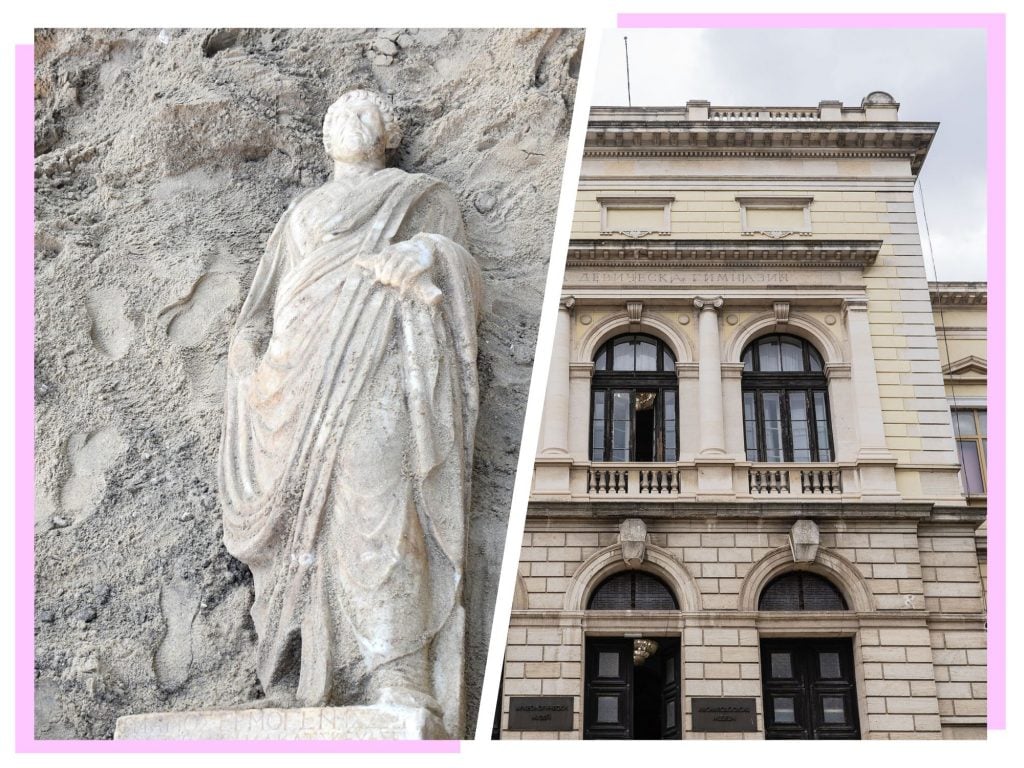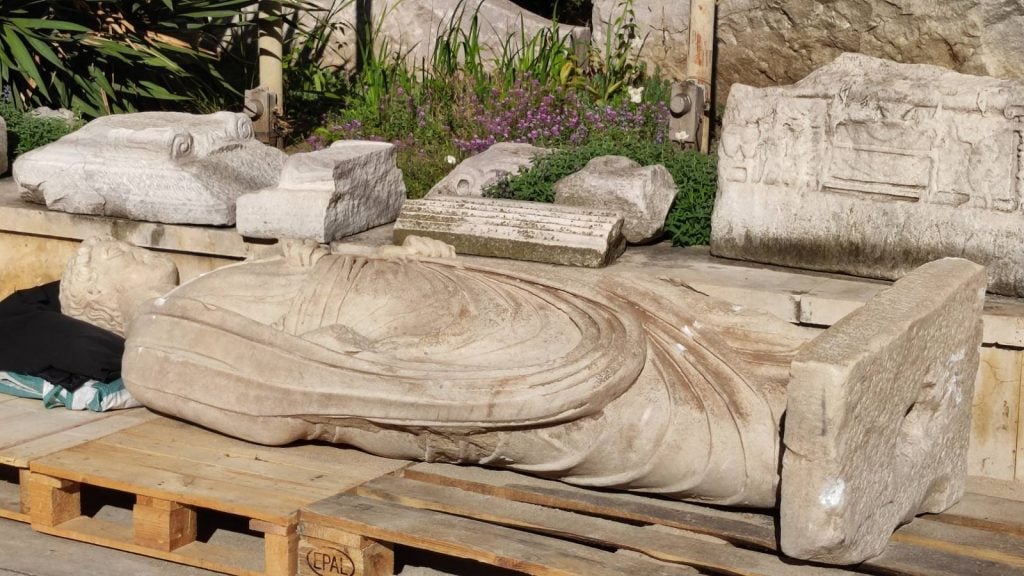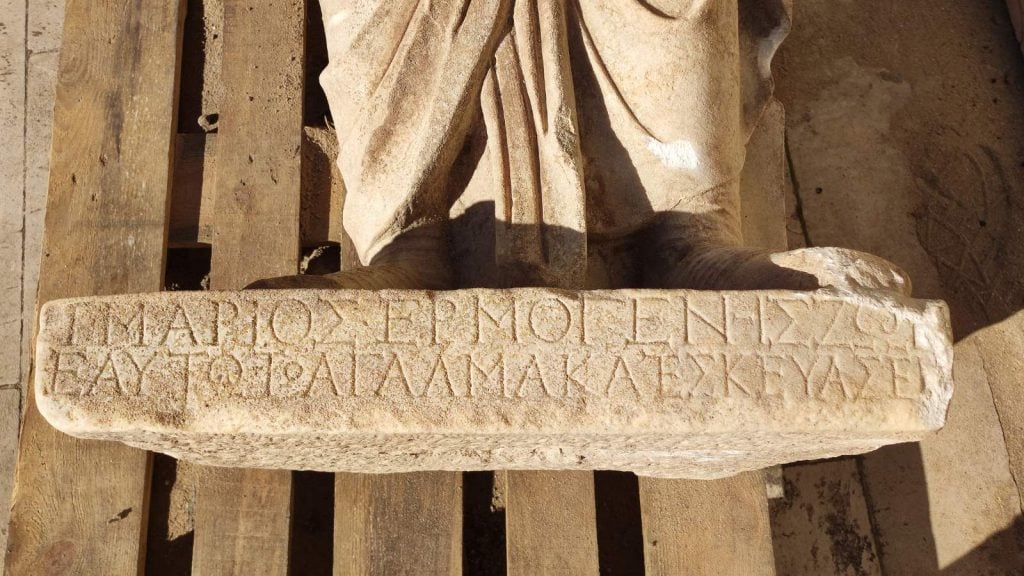Archaeology & History
Pristine Roman Statue Unearthed by Construction Workers in Bulgaria
The artifact bears the name of Gaius Marios Hermogenes.

An exceptionally well-preserved marble statue of a Roman dignitary has been discovered by construction workers in Varna, a coastal city on the Black Sea in Bulgaria. The life-sized sculpture, which dates to the late 2nd or early 3rd century C.E., was found outside the fortress walls of what was formerly the ancient city of Odessos.
A construction contractor rushed to alert the Varna Regional Museum of History upon making the discovery in an area containing alluvium, which is a mixture of sand, clay, silt, and gravel left by streams.

An exceptionally well-preserved marble statue of a Roman dignitary has been discovered by construction workers in Varna, Bulgaria. Courtesy of Varna Regional Museum of History.
The white marble sculpture, which stands slightly larger than human height, depicts a middle-aged man with a short beard, dressed in a Roman toga with a scroll in his only remaining hand. The statue is remarkably intact, with some damage to the face and a missing right hand. A well-preserved Greek inscription on the pedestal identifies the man Gaius Marios Hermogenes.
The depiction of his clothing suggests Hermogenes was a citizen of significant social status, one of ancient Odessos’s elites. Vasil Tenekedjiev of the museum has proposed that enemies of this public figure might have removed the statue, dumping it outside the city’s walls.

A well-preserved Greek inscription on the pedestal identifies the man Gaius Marios Hermogenes.
Yet another fascinating chapter has been added to Varna’s rich historical narrative with this discovery. The city, originally established as a Greek colony in 570 B.C.E., evolved into a major Roman port in the province of Moesia, flourishing during the 2nd and 3rd centuries C.E.
Restoration specialists are preparing to clean the artifact at the Archaeological Museum in Varna, where the statue is currently held. While some enthusiasts have speculated about a potential connection to the famous Roman statesman Gaius Marius, the statue’s dating places it approximately 400 years after his death, with the similar name likely reflecting the repetitive nature of Roman naming conventions.





